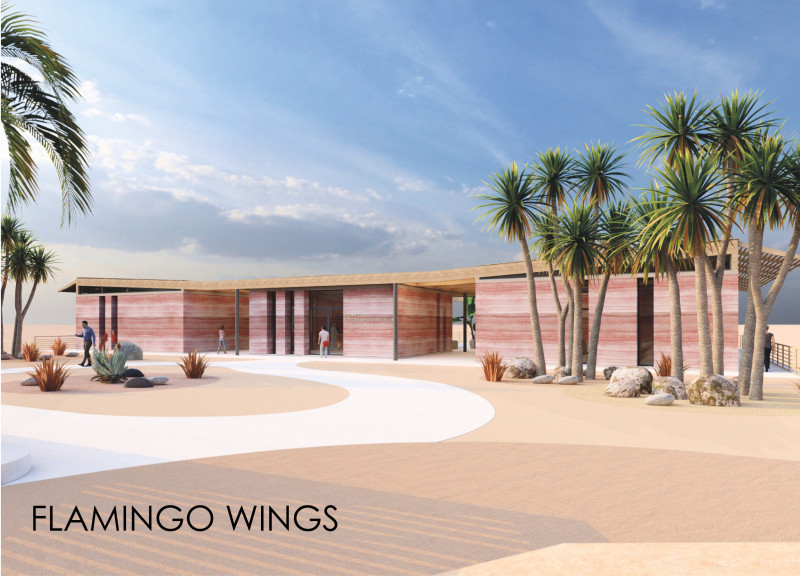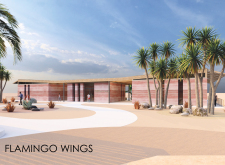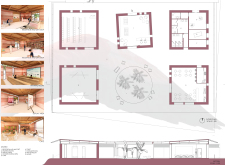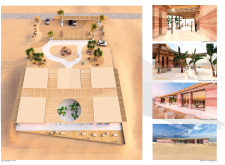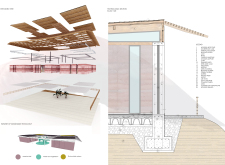5 key facts about this project
The Flamingo Visitor Center is located in Abu Dhabi, designed to connect visitors with the rich ecosystem of the flamingo reserve. It serves several important functions, including a reception area, a training room, and spaces for displaying information. The design approach focuses on blending the built environment with nature, creating opportunities for education and interaction.
Functional Areas
Several distinct areas within the center enhance the visitor experience. The reception and gift shop offer materials that inform guests about the local wildlife. Close to these areas, a training room and display space are included, aimed at promoting learning about conservation efforts and raising awareness of environmental issues.
Outdoor Integration
The design encourages outdoor interaction through outside seating and a café where visitors can relax and enjoy views of the natural surroundings. A panoramic terrace provides a key vantage point for observing wildlife, allowing guests to experience the beauty of the reserve firsthand. This outdoor space fosters a deeper appreciation for the area’s unique ecology.
Materiality and Sustainability
Sustainability plays an essential role in the choice of materials used in the center. Among the materials identified are wooden roof tiles, waterproof cases, thermal insulation, and building boards. These contribute to energy efficiency and durability. Structural elements like joists, beams, and vasistas windows ensure stability while allowing natural light to fill the interior, creating a welcoming environment for visitors.
Architectural Details
Attention to architectural detail includes the use of wooden supports and rammed earth, which enhance the physical connection to the site. Air vents are thoughtfully integrated into the design for effective ventilation, helping maintain a comfortable atmosphere. The combination of steel bars and insulation reinforces the structure’s ability to withstand local climate challenges while supporting an environmentally conscious design approach.


